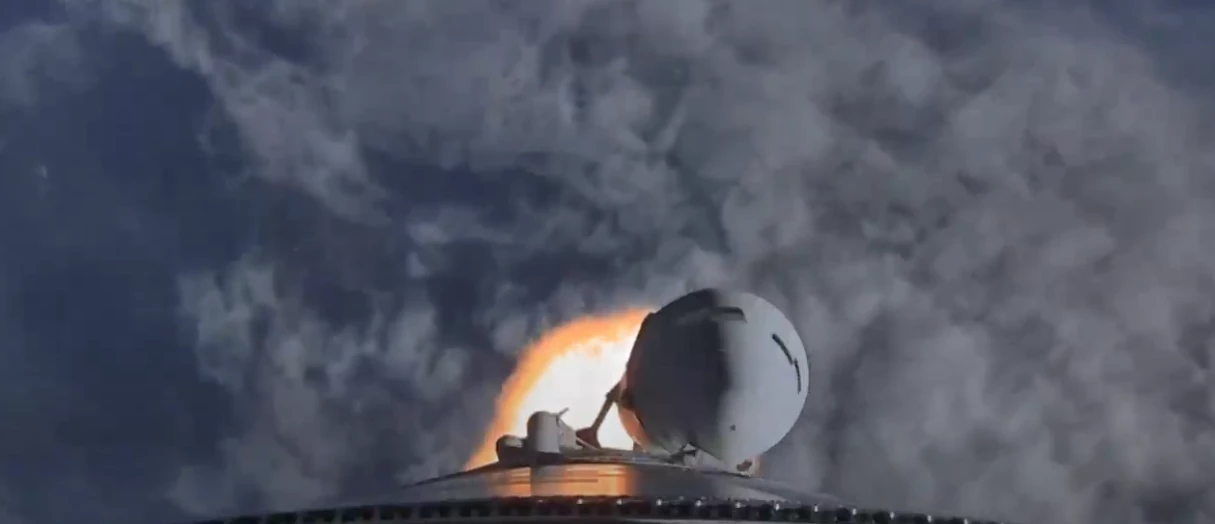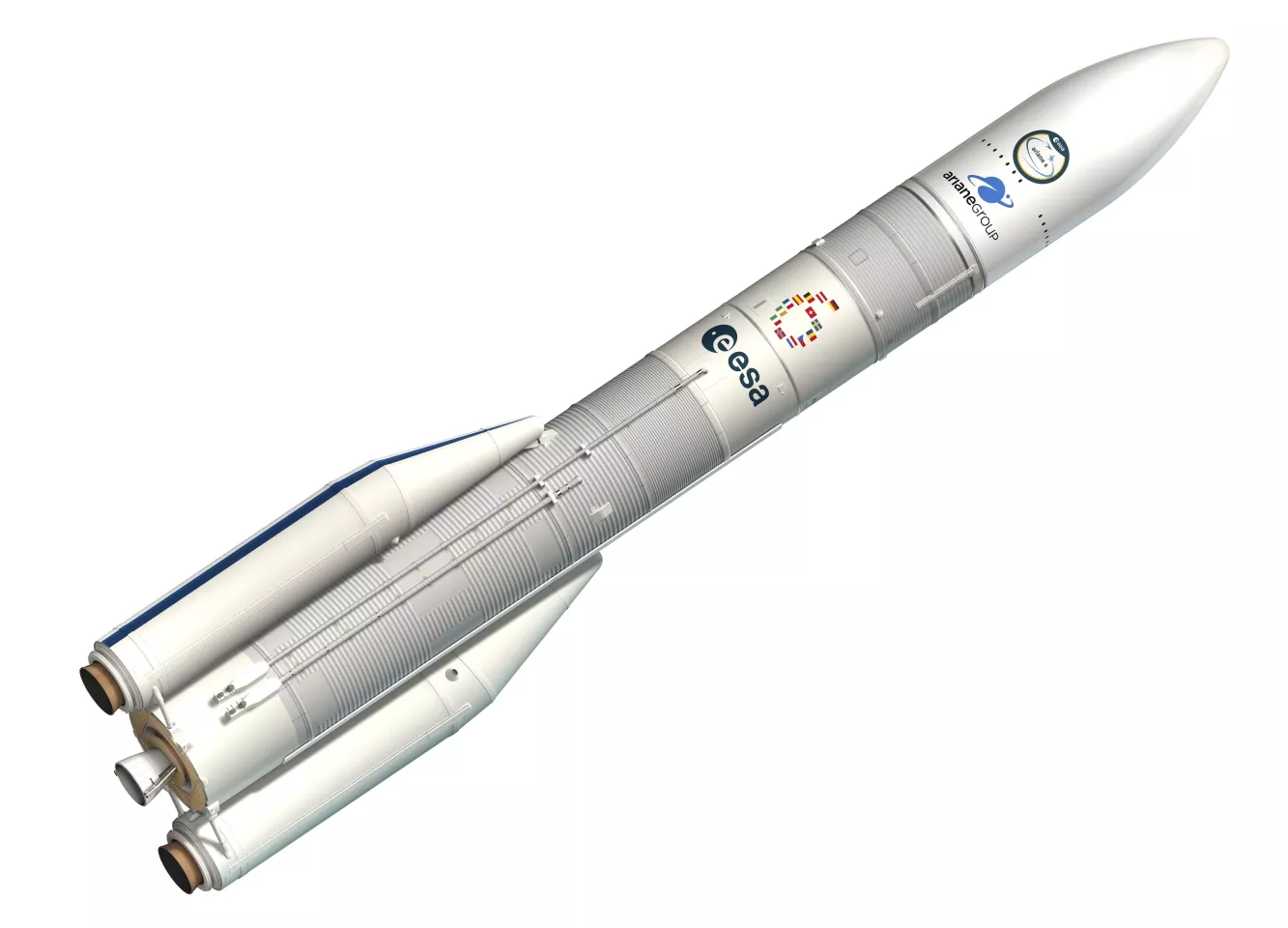Europe's newest heavy-lift rocket roared into space today as the Ariane 6 booster lifted off from the Kourou Spaceport in French Guiana at 4:00 pm GFT (19:00 GMT). Designated VA262, the inaugural flight carried a variety of payloads into orbit.
Powered by the liquid-fueled Vulcain 2.1 engine and two P120C strap-on solid-fuel boosters, the launch took place at the South American site under partly cloudy skies and went off on time without major delay. Booster separation took place at the two-minute, 16-second mark and the main engine cutoff at seven minutes, 35 seconds, with second-stage separation six seconds later.
At seven minutes, 50 seconds, the Vinci second stage rocket engine fired for about five minutes before the cutoff. One of the main purposes of the maiden flight was to demonstrate how the upper stage can refire up to four times so Ariane 6 can send payloads into different orbits and can deorbit the second stage or send it into a graveyard orbit to reduce space debris. Because of this, the second stage refired at the 56-minute mark for 22 seconds to send the rocket into a circular orbit.
At one hour, six minutes into the flight, a series of satellites provided by international customers were released. There were other experiments that remained with the second stage and sent data back to Earth. Meanwhile, two capsules were released before reentry to gather data and test materials to be used for future spacecraft capable of returning to Earth.
In all, three firings were completed by the Vinci engine, leading to the beginning of the reentry maneuver at the two-hour, 40-minute mark.
The Ariane 6 is the replacement of the Ariane 5, which was Europe's heavy-lift workhorse rocket that retired last year. Larger and cheaper to operate than its predecessor, the Ariane 6 can fly up to 11 times per year.

The rocket comes in two configurations, the A62 with two solid rocket boosters and the A64 with four. The former can carry 9,900-lb (4,500-kg) payloads into geosynchronous orbit (GSO), while the latter can deliver 25,400 lb (11,500 kg) to GSO and smaller payloads into deep space.
While today's launch was certainly a success, ESA is a bit touchy on the subject of Ariane. The project has been held back by years of delays and in that time competitors like SpaceX have stolen a march by developing reusable boosters that exceed Ariane 6 in size and power while drastically reducing launch costs.
In some quarters, Ariane 6 has been declared obsolete on arrival. In response, ESA, prime contractor ArianeGroup, and launch services provider Arianespace have countered that there are already 30 orders to fly on Ariane 6, though they are less forthcoming about future economics.

The question remains, can a non-reusable rocket that is essentially an update of a 1990s design hope to compete in an industry that is rapidly expanding and moving on from state agencies to private companies that are relying more and more on rapid innovation?
"A completely new rocket is not launched often, and success is far from guaranteed," said ESA's Director General Josef Aschbacher. "I am privileged to have witnessed this historic moment when Europe's new generation of the Ariane family lifted off – successfully – effectively reinstating European access to space.
"An inaugural launch is a huge undertaking from thousands of people who have worked relentlessly for years. To see it perform wonderfully at the first attempt is testament to their dedication and a demonstration of European excellence in engineering and technology. Heartfelt thanks go to the teams at ESA, CNES, ArianeGroup and Arianespace for their hard work to get to this point. I also want to sincerely thank our Member States for having enabled and supported the Ariane 6 programme along the way. Not always easy, but the endurance shown has paid off handsomely today."
Source: ESA











